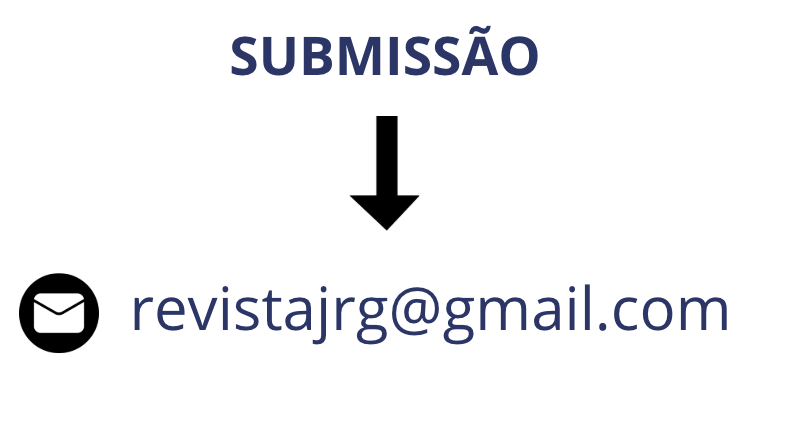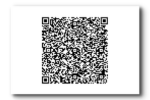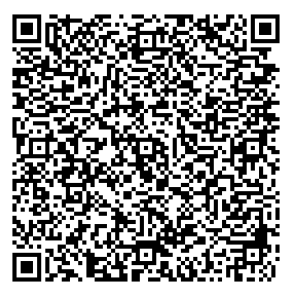3D printed anatomical prototypes of the spinal cord
DOI:
https://doi.org/10.55892/jrg.v7i14.1053Keywords:
Neuroanatomy, 3D printing, Alternative learning methods, Spinal cord, PrototypesAbstract
Human anatomy is considered an essential basis for medical training. However, there are difficulties in acquiring cadaveric structures for study, especially when it comes to neuroanatomical structures, which are also very difficult to handle and dissect due to their fragility. Faced with these difficulties, alternative means, such as the use of 3D printing to manufacture anatomical parts, have been developed in recent years. Thus, after discovering that the main demands within the anatomy laboratory of the UFPR Toledo Campus medical course are structures of the central nervous system, the aim of this research was to make neuroanatomical structures using 3D printing in order to promote differentiated and complementary teaching in neuroanatomy in this laboratory. Thus, the structures of the spinal cord were detailed in: a prototype of the complete spinal cord containing sulci, central canal, white matter, gray matter, anterior median fissure and intumescences; four cross-sections of the spinal cord in the cervical, thoracic, lumbar and sacral regions with differentiation of the proportions of white and gray matter along these regions; a cross-section of the white matter showing its tracts and fascicles; a cross-section of the gray matter showing its laminae from I to X and columns. The methodology used to make these models was 3D molds using the Fusion 360 program, which is available free of charge to students at the institution, based on images obtained from neuroanatomy books included in the UFPR library's digital collection. These models were then printed using a 3D printer with thermoplastic materials in partnership with Biopark. Finally, we hope to contribute and spread the word not only to UFPR, but also to other institutions about the importance of innovative and technological learning, in the expectation that further studies will be carried out to evaluate the practical approach of the parts in the academic environment.
Downloads
References
BIALY, Safaa El; WENG, Robin; JALALI, Alireza. Development of a 3D printed neuroanatomy teaching model. University of Ottawa Journal of Medicine, [s.l.], v. 9, n. 1, p. 49-53, 17 maio 2019.
BICAN, Orhan; MINAGAR, Alireza; PRUITT, Amy. The spinal cord. A Review of Functional Neuroanatomy, Philadelphia, USA, 31. ed. , p. 1-18, 2013. Disponível em: https://pubmed.ncbi.nlm.nih.gov/23186894/ . Acesso em: 25 ago. 2022.
BLOG 3D RECYCLER. Como funciona a impressora 3D. 2018. Não paginado. Disponível em: http://3drecycler.blogspot.com/2018/04/como-funciona-uma-impressora-3d.html. Acesso em: 12 ago. 2022.
CHO, Tracey. Spinal cord functional anatomy. Spinal Cord, American Academy of Neurology, v. 21, p. 13-25, 2015. Disponível em: https://pubmed.ncbi.nlm.nih.gov/25651215/. Acesso em: 28 ago. 2022.
COSTELLO, John P. et al. Utilizing three-dimensional printing technology to assess the feasibility of high-fidelity synthetic ventricular septal defect models for simulation in medical education. World Journal For Pediatric And Congenital Heart Surgery, [S.l.], v. 5, n. 3, p. 421-426, 23 jun. 2014.
FLEURY, Maria; WERLANG, Sergio. Pesquisa aplicada: conceitos e abordagens. Pesquisa, GV Pesquisa, 2017. Disponível em: https://bibliotecadigital.fgv.br/ojs/index.php/apgvpesquisa/article/view/72796/69984.
Acesso em: 25 ago. 2022.
HOCHMAN, Shawn. Spinal cord. Central Nervous System, Georgia, USA, v. 17, n. 22, 2007. Disponível em: https://pubmed.ncbi.nlm.nih.gov/18029245/. Acesso em: 28 ago. 2022.
LIM, KahHeng Alexander et al. Use of 3D printed models in medical education: a randomized control trial comparing 3d prints versus cadaveric materials for learning external cardiac anatomy. Anatomical Sciences Education, [s.l.], v. 9, n. 3, p. 213- 221, maio 2016.
MARTIN, John H. Neuroanatomia. Porto Alegre: Grupo A, 2014. E-book. ISBN 9788580552645. Disponível em: https://integrada.minhabiblioteca.com.br/#/books/9788580552645/. Acesso em: 25 ago. 2022.
MARTINEZ, Ana Maria Blanco; ALLODI, Silvana; UZIEL, Daniela. Neuroanatomia essencial.1. ed. Rio de Janeiro: Guanabara Koogan, 2014. Disponível em: < https://www.meulivro.biz/neuroanatomia/3783/neuroanatomia-essencial-1-ed-pdf/>. Acesso em: 5 set. 2022.
MATOZINHOS, Izabela; MADUREIRA, Angélica; SILVA, Gabriel; MADEIRA, Glícia; OLIVEIRA, Isabel; CORRÊA, Cristiane. Impressão 3D inovações no campo da medicina. Revista Interdisciplinar Ciências Médicas, p. 143-162, 2017.
MCMENAMIN, Paul G., et al. The production of anatomical teaching resources using three-dimensional (3D) printing technology: 3D printing in anatomy education. Anatomical Sciences Education. [s.l.], v. 7, n. 6, novembro de 2014, p. 479–86. DOI.org (Crossref). Disponível em: https://doi.org/10.1002/ase. 1475. Acesso em: 5 set. 2022
MENESES, Murilo S. Neuroanatomia aplicada. [Rio de Janeiro]: Grupo GEN, 2011. E-book. ISBN 978-85-277-2074-8. Disponível em: https://integrada.minhabiblioteca.com.br/#/books/978-85-277-2074-8/. Acesso em: 25 ago. 2022.
MOORE, Keith L.; DALLEY, Arthur F.; AGUR, Anne M. R. Anatomia orientada para a prática clínica. 8. ed. Rio de Janeiro: Guanabara Koogan, 2019.
MOORE, Keith L.; DALLEY, Arthur F.; AGUR, Anne M R. Anatomia Orientada para Clínica. [Rio de Janeiro]: Grupo GEN, 2022. E-book. ISBN 9788527734608. Disponível em: https://integrada.minhabiblioteca.com.br/#/books/9788527734608/.
Acesso em: 25 ago. 2022.
NETTER, Frank H. Atlas de anatomia humana. 7. ed. Rio de Janeiro: Guanabara Koogan, 2021.
PAYNES, G.; SILVA, V.; MOREIRA, J. A utilização da impressão 3D na medicina: projetos e relatórios de estágios, v.2, n.1, 30 maio 2020: Projeto de conclusão de cursos técnicos. Disponível em: http://raam.alcidesmaya.com.br/index.php/projetos/article/view/192. Acesso em: 19 set. 2022
.
PINHEIRO, Cristiano Max Pereira, et al. Impressoras 3D: uma mudança na dinâmica do consumo. Signos do Consumo. [s.l.], vol. 10, no 1, jan. 2018, p. 15. DOI.org (Crossref). Disponível em: https://doi.org/10.11606/issn.1984-5057.v10i1p15-22. Acesso em: 15 ago. 2022.
ROMERO, Alicia Del Carmen Becerra; AGUIAR, Paulo Henrique Pires. Impressão em três dimensões: aplicações em neurocirurgia. Jornal Brasileiro de Neurocirurgia, [s.l.], p. 195-202, 20 out. 2016.
SHEERIN, Fintan. Spinal cord injury: anatomy and physiology of the spinal cord. Anatomy and physiology of the spinal cord., Emergency nurse, v. 12, 8. ed., 2004. Disponível em: https://pubmed.ncbi.nlm.nih.gov/15635928/. Acesso em: 29 ago. 2022.
SILVA, Yslaíny Araújo, et al. Confecção de modelo neuroanatômico funcional como alternativa de ensino e aprendizagem para a disciplina de neuroanatomia. Revista Ibero-Americana de Estudos em Educação, jul. 2017, p. 1674–88. periodicos.fclar.unesp.br. Disponível em: https://doi.org/10.21723/riaee.v12.n.3.2017.8502. Acesso em: 29 set. 2022.
SOBOTTA, Johannes. Atlas de anatomia humana: cabeça, pescoço e neuroanatomia. 24. ed. Rio De Janeiro: Editora Guanabara Koogan S.A., 2018.
Sobotta, Johannes. Atlas colorido de citologia, histológica e anatomia microscópica humana. 2015. Disponível em: https://issuu.com/heberbensi/docs/atlas_colorido_de_histologia/233. Acesso em: 25 ago. 2022.
TANK, Patrick; GEST, Thomas R. Atlas de anatomia humana. Porto Alegre: Artmed, 2009.
WASCHKE, Jens. Sobotta anatomia clínica. [Rio de Janeiro]: Grupo GEN, 2018. E-book. ISBN 9788595151536. Disponível em: https://integrada.minhabiblioteca.com.br/#/books/9788595151536/. Acesso em: 25 ago. 2022.
WHITAKER, Matthew. The history of 3D printing in healthcare. The Bulletin of the Royal College of Surgeons of England. [s.l.] v. 96, n. 7, jul. 2014, p. 228–29. DOI.org (Crossref). Disponível em: https://doi.org/10.1308/147363514X13990346756481. Acesso em: 24 ago. 2022.











































